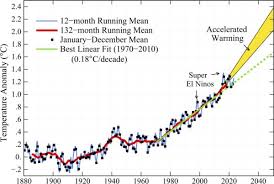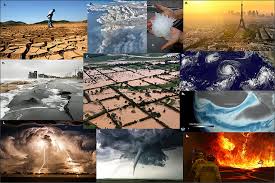Climate change remains one of the most pressing issues facing humanity today. As we advance into 2024, scientific research continues to provide crucial insights into the nature, effects, and mitigation of climate change. This article delves into some incredible science facts about climate change that highlight the latest discoveries, technological advancements, and ongoing challenges.
1. Accelerating Temperature Rise

1.1. Record Highs
- Global Temperature Trends: According to NASA, 2023 was one of the hottest years on record, and 2024 is projected to continue this trend. The global average temperature has risen by approximately 1.2°C above pre-industrial levels, driven primarily by greenhouse gas emissions from human activities.
- Extreme Heat Events: The frequency and intensity of extreme heat events have increased. Studies show that heatwaves are becoming more severe and prolonged, impacting health, agriculture, and ecosystems.
1.2. Heatwaves and Human Health
- Health Impacts: Prolonged exposure to high temperatures can lead to heat-related illnesses such as heat exhaustion and heatstroke. The World Health Organization (WHO) has warned that heatwaves are becoming more common and are likely to affect millions of people worldwide, particularly vulnerable populations.
2. Melting Ice Caps and Rising Sea Levels
2.1. Accelerated Ice Melt
- Arctic and Antarctic Melting: Satellite data indicates that ice melt in the Arctic and Antarctic is occurring at an unprecedented rate. The Greenland Ice Sheet and the Antarctic Ice Sheet are losing ice mass rapidly, contributing to global sea level rise.
- Permafrost Thawing: Permafrost, which stores vast amounts of carbon dioxide and methane, is also thawing at an alarming rate. This thawing releases greenhouse gases into the atmosphere, further accelerating climate change.
2.2. Coastal Flooding
- Sea Level Rise: The Intergovernmental Panel on Climate Change (IPCC) reports that global sea levels have risen by about 3.4 millimeters per year over the past decade. Coastal cities and low-lying areas are experiencing increased flooding and erosion, threatening infrastructure and ecosystems.
3. Ocean Acidification
3.1. Chemical Changes in the Ocean
- Increased CO2 Absorption: The world’s oceans absorb approximately 30% of the carbon dioxide emitted into the atmosphere. This has led to ocean acidification, where the pH levels of seawater decrease, affecting marine life.
- Impact on Marine Ecosystems: Acidification negatively impacts coral reefs, shellfish, and other marine organisms that rely on calcium carbonate to build their shells and skeletons. This disruption has cascading effects on marine biodiversity and fisheries.
3.2. Coral Bleaching
- Coral Reefs: Rising ocean temperatures and acidification contribute to coral bleaching events, where corals expel the symbiotic algae living in their tissues, leading to a loss of color and vitality. Bleached corals are more susceptible to disease and can die if conditions do not improve.
4. Climate Change and Extreme Weather Events

4.1. Increased Frequency and Intensity
- Hurricanes and Typhoons: Climate change is linked to more intense and frequent hurricanes and typhoons. Warmer sea surface temperatures provide more energy for storms, leading to stronger and more destructive weather events.
- Droughts and Floods: Extreme weather patterns, including prolonged droughts and intense flooding, are becoming more common. These events disrupt agriculture, water supplies, and ecosystems, posing significant risks to food security and livelihoods.
4.2. Economic Costs
- Damage and Recovery: The economic impact of extreme weather events is substantial. According to the Global Climate Risk Index, the cost of natural disasters has increased significantly, with damages running into billions of dollars annually. Recovery and adaptation efforts require substantial investment and resources.
5. Advances in Climate Science and Technology
5.1. Climate Modeling and Predictions
- Enhanced Models: Advances in climate modeling have improved our ability to predict future climate scenarios and assess the impacts of various mitigation strategies. High-resolution models provide more accurate projections of temperature, precipitation, and sea level changes.
- AI and Machine Learning: Artificial intelligence (AI) and machine learning techniques are being used to analyze large datasets and improve climate predictions. These technologies help identify patterns and trends that inform policy and decision-making.
5.2. Renewable Energy Innovations
- Technological Advancements: The development of renewable energy technologies, such as solar, wind, and geothermal power, is crucial for reducing greenhouse gas emissions. Innovations in energy storage, grid management, and efficiency are enhancing the viability and affordability of renewable energy sources.
- Global Adoption: Many countries are investing in renewable energy infrastructure to transition away from fossil fuels. The growth of clean energy sectors is contributing to a more sustainable and resilient energy system.
6. Mitigation and Adaptation Strategies
6.1. Emission Reduction Targets
- International Agreements: The Paris Agreement aims to limit global warming to well below 2°C above pre-industrial levels, with efforts to keep it below 1.5°C. Countries are setting national targets for reducing greenhouse gas emissions and transitioning to low-carbon economies.
- Carbon Pricing: Carbon pricing mechanisms, such as carbon taxes and cap-and-trade systems, are being implemented to incentivize emission reductions and drive investment in clean technologies.
6.2. Adaptation Measures
- Resilience Building: Adaptation strategies focus on enhancing resilience to the impacts of climate change. This includes building infrastructure to withstand extreme weather, protecting natural ecosystems, and developing early warning systems for disaster preparedness.
- Community Engagement: Engaging communities in adaptation planning and implementation is essential for effective resilience building. Local knowledge and involvement ensure that adaptation measures are tailored to specific needs and vulnerabilities.
7. Public Awareness and Education

7.1. Raising Awareness
- Climate Education: Educating the public about climate change and its impacts is vital for fostering informed decision-making and encouraging action. Schools, organizations, and media campaigns play a crucial role in raising awareness and promoting sustainable behaviors.
- Youth Involvement: Young people are increasingly involved in climate activism and advocacy. Their efforts to raise awareness, influence policy, and drive change are instrumental in addressing climate challenges.
7.2. Individual Actions
- Personal Contributions: Individuals can contribute to climate change mitigation through actions such as reducing energy consumption, supporting renewable energy, and adopting sustainable practices. Every small effort collectively contributes to a larger impact.
Conclusion
As we navigate the complexities of climate change in 2024, the science behind its causes, effects, and solutions continues to evolve. Understanding these incredible science facts helps us grasp the urgency of the situation and the need for collective action. From the accelerating rise in temperatures and melting ice caps to advancements in technology and renewable energy, the quest to address climate change requires a multifaceted approach. By staying informed and engaged, we can contribute to a more sustainable future and mitigate the impacts of this global challenge.

